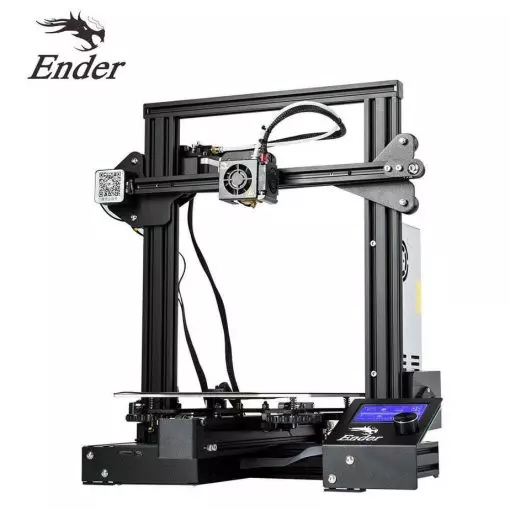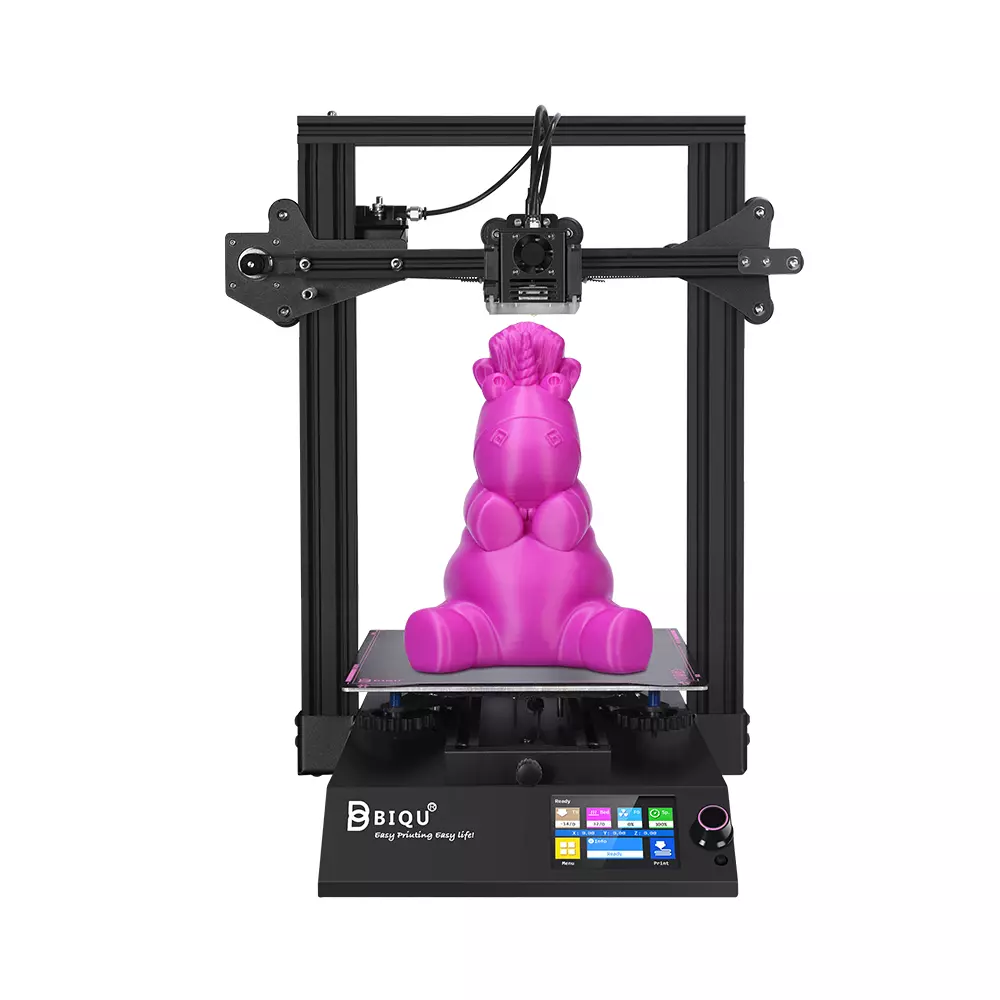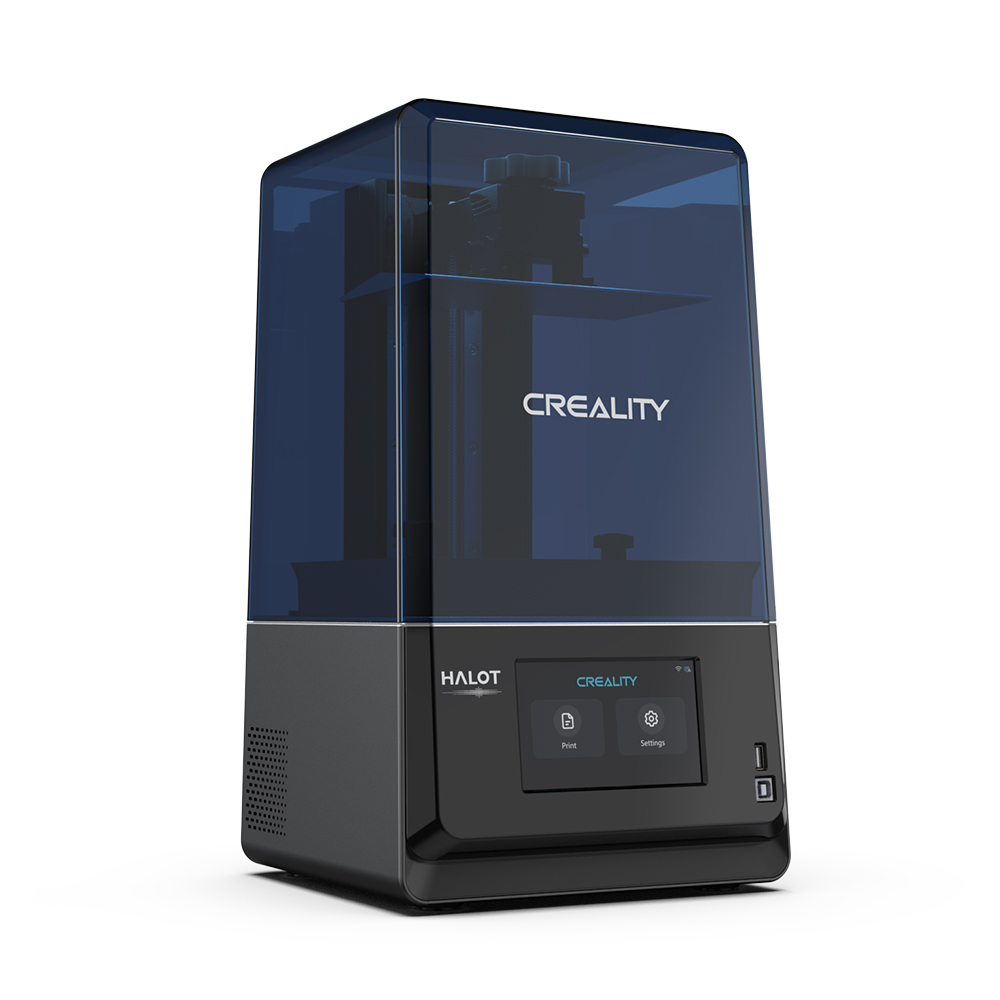Compare Ender 3 vs BIQU B1 vs Halot One Plus
Comparison between the best 3D printers
Choose the best 3D printer at the best price. The cheapest 3D printers are here.
Buy a 3D printer here with 3D Fila.
 |
 |
 |
|
| Model | Ender 3[BUY Ender 3] |
BIQU B1 |
Halot One Plus[BUY Halot One Plus] |
| Printing Material | Filament | Filament | Resin |
| Estimated price | $210,00 | $269,00 | $399,00 |
| Fabricante | Creality 3D | BigTreeTech | Creality 3D |
| Release Year | 2018 | 2020 | 2022 |
| Print Volume [mm] | 220x220x250 | 235x235x270 | 102x172x160 |
| Printer Size [mm] | 440x440x465 | 412x402x492 | 236x245x416 |
| Weight [kg] | 6,62 | 8,00 | 6,8 |
| Power Loss Recovery | NO | YES | NO |
| Maximum Resolution [mm] | 0,1 | 0,1 | |
| Processor | 8 bits | 32 Bits BTT SKR V 1.4 | |
| Display | Mono | Touchscreen TFT 3,5'' | |
| Power Supply | 24V / 270W | 24V / 360W | |
| Connectivity | SD / USB | SD / USB | USB / Wi-Fi |
| Operating systems | Windows, Mac, Linux | Windows, Mac, Linux | |
| Date of registration in the system | 2021-04-13 | 2021-04-14 | 2022-10-11 |
| Release date | 2018 | 2020 | 2022 |
| Extra features | The Ender 3 V1 is a DIY assembly 3D printer, a sales leader since 2017, standing out for its cost-benefit. With a wide printing capacity, it has a CNC machined structure for precision and stability. It offers high-precision prints with low noise, thanks to its innovative V-profile and pulleys. It has a self-adhesive magnetic platform for easy removal of models and excellent adhesion. The Ender 3 heats up quickly, reaching 100°C in 5 minutes, ideal for agile prints. It includes protection against power failures, allowing you to resume printing after interruptions, saving time and material. | The BIQU B1 is an advanced 3D printer with a silent 32-bit BTT SKR V1.4 motherboard and ARM Cortex-M3 CPU, offering DIY interfaces (I2C, SPI, WiFi) and dual Z-axis. Its dual BTT B1 TFT35 V3.0 operating system allows real-time monitoring and multiple printing modes, including G-code visualization effects. It stands out for its BIQU SSS (Super Spring Steel), ensuring easy model adhesion and simplified removal, with the possibility of using it on both sides. It includes a filament sensor, automatically pausing printing in case of filament breakage. The multicolored RGB lights integrated into the hotend allow you to view the printing status even at night. Additional notes include the need for a BIQU-specific Type-C cable and extra interfaces for smart filament sensor and BL Touch. | Crealitys Halot-One Plus printer stands out for its 4K+ resolution that delivers sharp details and consistent surfaces. It features a fast and responsive 5-inch LCD interface, as well as easy-to-use Halot Box software. It offers Wi-Fi connectivity and remote print monitoring, as well as an integrated air filtration unit, a rare feature in this price range. The Halot-One Plus is designed for the prosumer market, combining high quality with advanced features such as Wi-Fi and air filtration. During testing, it stood out for implementing these features at an affordable cost, while maintaining functionality. It features an attractive design with a UV-resistant blue cover and a robust dual rail system for the Z-axis, ensuring smooth and consistent movements. The large LCD and high resolution of the LCD mask (4320 x 2560) are other strong points, allowing for fine details and textures in prints. |
| Support for multiple colors and materials (AMS and CFS) | NO | NO | NO |
Notes * |
|||
| Cost-benefit | 6 / 10 | 7 / 10 | 8 / 10 |
| Hardware | 0.5 / 10 | 2 / 10 | 1.4 / 10 |
| Screen | . | . | . |
| Print volume | 3 / 10 | 3 / 10 | 3 / 10 |
| Performance | 1 / 10 | 1 / 10 | 9 / 10 |
| [BUY Ender 3] | [BUY Halot One Plus] |
Conclusion |
| In comparing the Ender 3, BIQU B1, and Halot One Plus, several critical factors emerge that can guide your purchasing decision based on your needs and budget. The Ender 3, despite being the oldest model and the most economical choice, offers commendable performance for hobbyists and beginners. Its advantages include a well-established design with reliable print quality, a decent print volume, and a user-friendly assembly process. However, it lacks advanced features such as power loss recovery, which may be a drawback for more intensive printing needs. On the other hand, the BIQU B1 is positioned as an advanced solution with a silent motherboard and dual Z-axis, enhancing stability and print accuracy. Its unique features—such as a filament sensor and RGB status indicators—add significant convenience, while its higher price reflects these enhancements. That said, it still falls short in terms of performance compared to the more recent Halot One Plus. The Halot One Plus stands out as the premium option designed for prosumers, offering exceptional print quality with 4K+ resolution and additional features like Wi-Fi connectivity and an integrated air filtration system. It caters to users who prioritize superior detail and convenience in printing, making it worth the higher investment for those serious about 3D printing. In conclusion, if you are looking for a budget-friendly option with solid performance, the Ender 3 is a reliable choice. For users seeking a more advanced experience without breaking the bank, the BIQU B1 offers a good balance of features and print quality. However, for those who are ready to invest in high-end capabilities and exceptional print quality, the Halot One Plus is the clear winner, reflecting its higher price with significant functional advantages. Ultimately, the best choice will depend on your specific requirements, whether it's cost-effectiveness, advanced features, or top-tier performance. |

